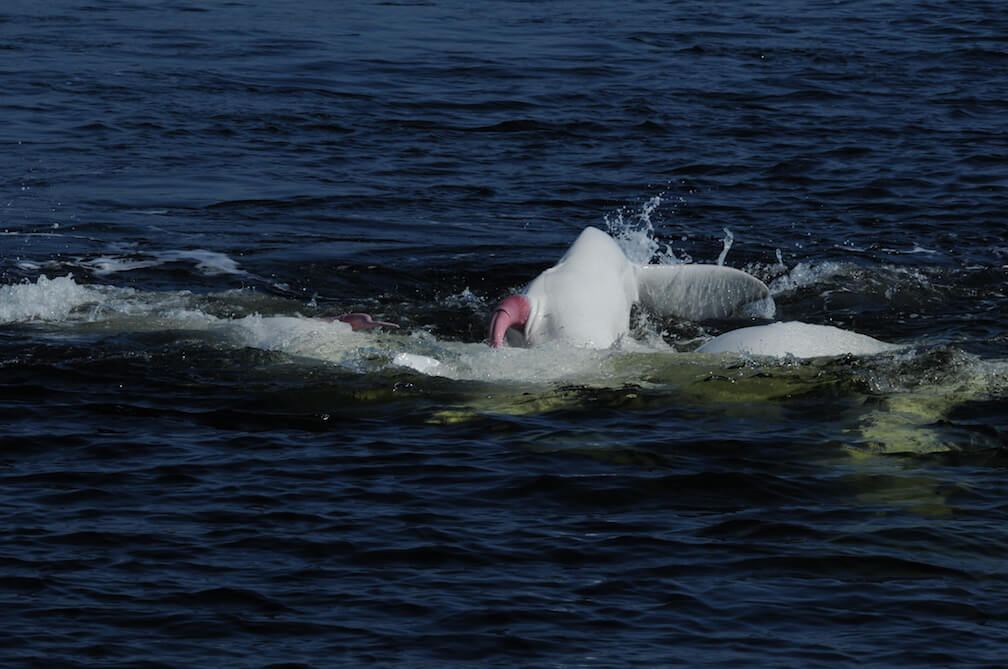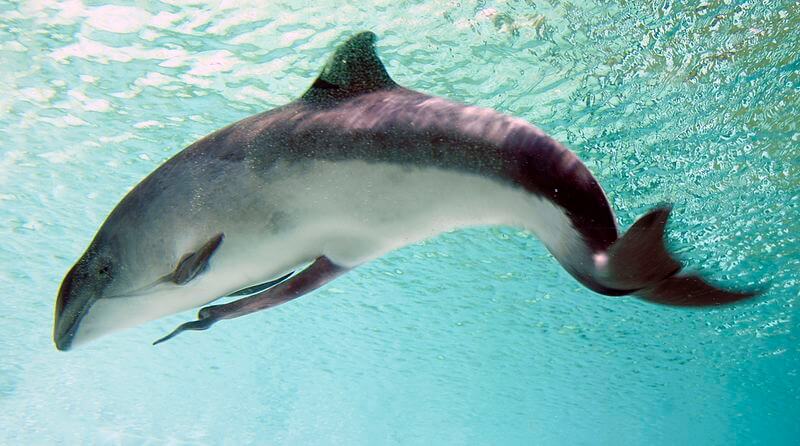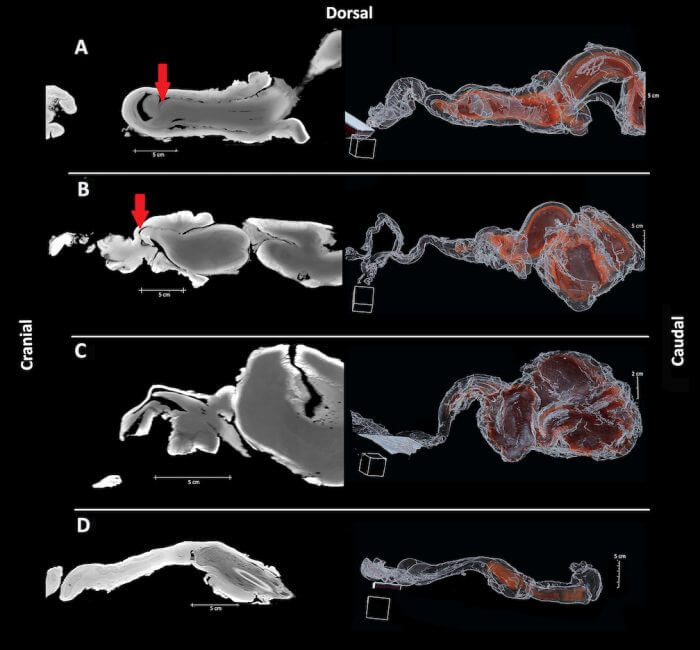Impressive numbers
The reproductive system of whales is proportional to the overall size of these giants. The penis of some baleen whales can reach 3 metres long. Right whales have the largest testicles in the animal kingdom, reaching a combined mass of 1,000 kg, which corresponds to 2% of their total weight. Despite being generally smaller than their baleen cousins, toothed whales have testicles that are 7 to 25 times larger than those of land mammals of comparable size. But what is the advantage of having such heavy testicles? They enable the production of large volumes of sperm, which increases the probability of fertilization. The blue whale, the largest known animal on Earth, is estimated to ejaculate about 20 litres!






